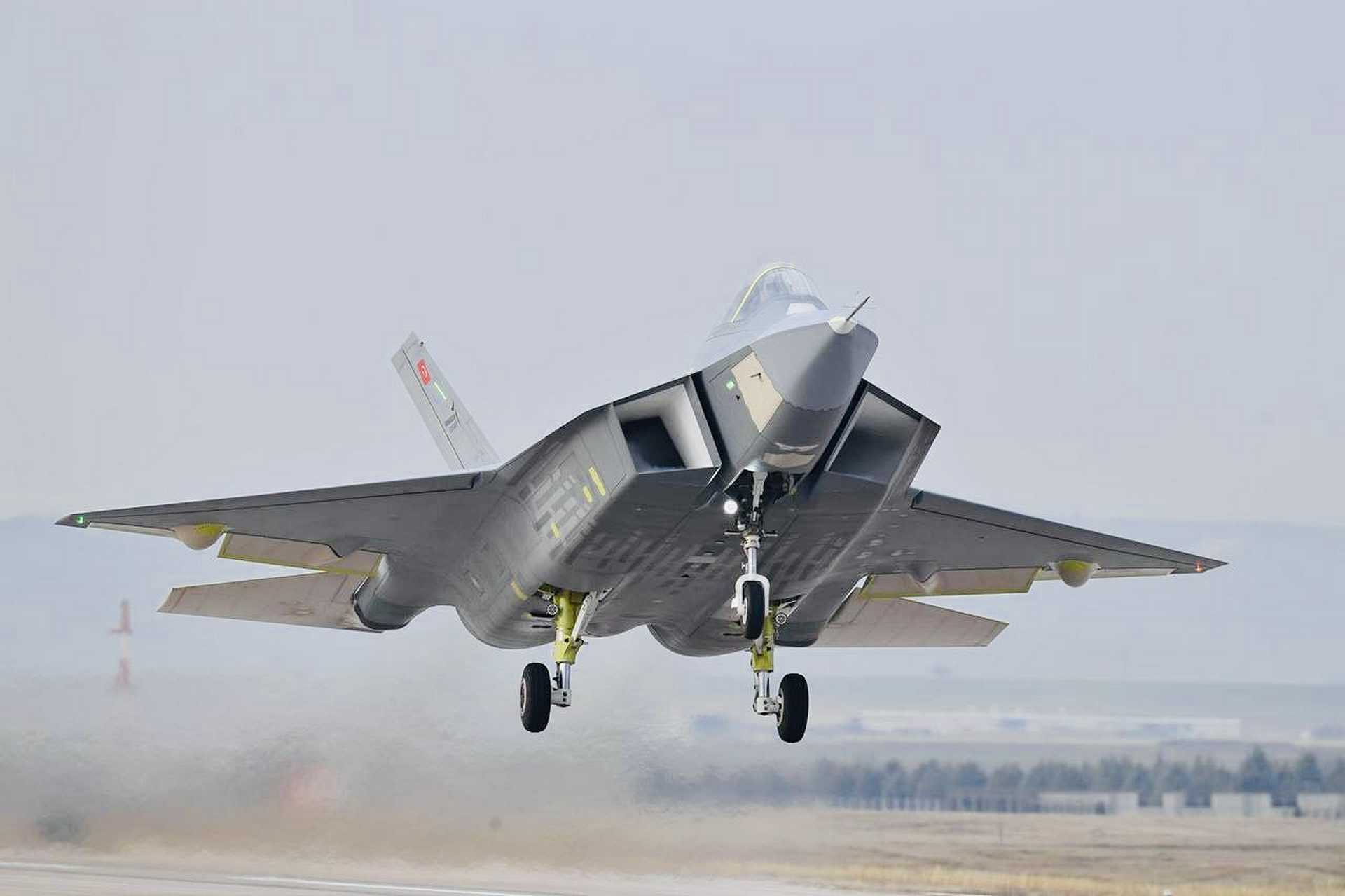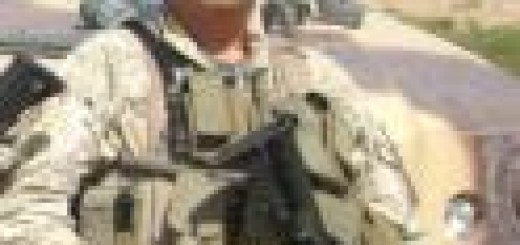Türkiye SSB Defense Industry Orders Six Kaan Fighter Jet Prototypes for Turkish Air Force

{loadposition bannertop}
{loadposition sidebarpub}
According to information published by the Turkish defense news website Ulusavunma, on July 16, 2025, the Presidency of Defense Industries of Türkiye (SSB) has officially placed an order for the sixth prototype of the KAAN fifth-generation fighter jet. This significant milestone confirms Türkiye’s accelerated push to field an indigenous fifth-generation combat aircraft developed entirely by its national aerospace industry. The KAAN project, spearheaded by Turkish Aerospace Industries (TAI), represents the first full-scale, domestically designed and produced fighter jet in Türkiye’s history, marking a transformative leap in national defense capability.Follow Army Recognition on Google News at this link
The KAAN is Türkiye’s first domestically developed fifth-generation stealth fighter jet, designed by Turkish Aerospace Industries to provide advanced air superiority, multirole combat capability, and full mission independence for the Turkish Air Force. (Picture source: Wikimedia)
The development of the Turkish-made KAAN fighter jet, initially known under the program name TF-X, began in earnest in 2016 as part of Türkiye’s strategic vision to modernize its air force with a fully indigenous combat aircraft. The design and development were entrusted to TAI under the leadership of the SSB, with early work focused on concept studies, computational fluid dynamics modeling, and simulation-based performance evaluations. The full-scale mock-up of the aircraft was unveiled in 2019 at the Paris Air Show, signaling Türkiye’s entry into the competitive arena of next-generation fighter development. By March 2023, the first prototype conducted its taxi trials, and on February 21, 2024, the KAAN successfully completed its maiden flight, demonstrating the program’s rapid pace and technical maturity.
As of July 2025, six prototypes have been planned or built, each serving different roles in the broader development roadmap. Prototype 1 has been used for basic flight envelope testing and airframe validation. Prototypes 2 and 3 have focused on avionics integration and sensor calibration. Prototypes 4 and 5 are being prepared for high-performance flight trials and weapons integration. The newly ordered Prototype 6 will contribute to parallel test campaigns, including wind tunnel evaluations, environmental survivability, advanced avionics validation, acceleration performance, and runway trials. This approach reflects a comprehensive and multi-threaded test strategy aimed at reducing development risks while accelerating readiness for serial production.
KAAN’s development is unfolding in a phased manner, with incremental capability enhancements across different production blocks. Early delivery units to the Turkish Air Force will offer basic stealth and sensor fusion functions, while later variants (notably Block 30 and Block 40) are scheduled to integrate an entirely domestically developed engine. This national powerplant is under active development and its integration into future KAAN airframes is seen as a strategic priority, reducing dependence on foreign propulsion technologies and boosting the sustainability of the fighter fleet.
Technologically, the KAAN fighter jet is engineered as a true fifth-generation platform. Key features include advanced stealth shaping with internal weapon bays, sensor fusion from an AESA radar system, IRST (infrared search and track), electronic warfare capabilities, and AI-assisted battlefield data processing. The aircraft is designed for air dominance missions with multirole flexibility, capable of engaging in beyond-visual-range (BVR) and close air combat while executing precision strike operations.
When compared to leading modern fighters such as France’s Dassault Rafale, the U.S.-built F-35 and F-22, the Eurofighter Typhoon, and Sweden’s Saab Gripen E, the KAAN offers a distinct positioning. Unlike the Rafale and Typhoon, which are considered 4.5-generation fighters with limited stealth and exposed weapon pylons, KAAN embraces a stealth-first architecture, aligning it more closely with the F-35. Its internal weapons bay provides radar signature minimization, and the integration of indigenous avionics aims to mirror the sensor fusion experience of the F-35. While the Gripen E boasts excellent electronic warfare systems and data link capabilities, it lacks stealth shaping and internal weapon carriage, giving KAAN an edge in contested environments.
Moreover, the KAAN is being built with modularity in mind, allowing for future upgrades in mission systems, radar, and propulsion. In contrast to the F-35, which involves significant international cooperation and proprietary restrictions, the KAAN represents an entirely sovereign combat aviation platform, offering Türkiye full control over lifecycle upgrades, mission customization, and export pathways.
The sixth KAAN fighter jet prototype order reflects Türkiye’s strategic determination to become a producer of high-end fighter aircraft and underscores its commitment to gaining full autonomy in aerospace defense manufacturing. As the KAAN progresses through its development cycle, it is poised to not only strengthen the Turkish Air Force but also potentially reshape the international fighter jet market with a competitive and independent fifth-generation alternative.

{loadposition bannertop}
{loadposition sidebarpub}
According to information published by the Turkish defense news website Ulusavunma, on July 16, 2025, the Presidency of Defense Industries of Türkiye (SSB) has officially placed an order for the sixth prototype of the KAAN fifth-generation fighter jet. This significant milestone confirms Türkiye’s accelerated push to field an indigenous fifth-generation combat aircraft developed entirely by its national aerospace industry. The KAAN project, spearheaded by Turkish Aerospace Industries (TAI), represents the first full-scale, domestically designed and produced fighter jet in Türkiye’s history, marking a transformative leap in national defense capability.
Follow Army Recognition on Google News at this link
The KAAN is Türkiye’s first domestically developed fifth-generation stealth fighter jet, designed by Turkish Aerospace Industries to provide advanced air superiority, multirole combat capability, and full mission independence for the Turkish Air Force. (Picture source: Wikimedia)
The development of the Turkish-made KAAN fighter jet, initially known under the program name TF-X, began in earnest in 2016 as part of Türkiye’s strategic vision to modernize its air force with a fully indigenous combat aircraft. The design and development were entrusted to TAI under the leadership of the SSB, with early work focused on concept studies, computational fluid dynamics modeling, and simulation-based performance evaluations. The full-scale mock-up of the aircraft was unveiled in 2019 at the Paris Air Show, signaling Türkiye’s entry into the competitive arena of next-generation fighter development. By March 2023, the first prototype conducted its taxi trials, and on February 21, 2024, the KAAN successfully completed its maiden flight, demonstrating the program’s rapid pace and technical maturity.
As of July 2025, six prototypes have been planned or built, each serving different roles in the broader development roadmap. Prototype 1 has been used for basic flight envelope testing and airframe validation. Prototypes 2 and 3 have focused on avionics integration and sensor calibration. Prototypes 4 and 5 are being prepared for high-performance flight trials and weapons integration. The newly ordered Prototype 6 will contribute to parallel test campaigns, including wind tunnel evaluations, environmental survivability, advanced avionics validation, acceleration performance, and runway trials. This approach reflects a comprehensive and multi-threaded test strategy aimed at reducing development risks while accelerating readiness for serial production.
KAAN’s development is unfolding in a phased manner, with incremental capability enhancements across different production blocks. Early delivery units to the Turkish Air Force will offer basic stealth and sensor fusion functions, while later variants (notably Block 30 and Block 40) are scheduled to integrate an entirely domestically developed engine. This national powerplant is under active development and its integration into future KAAN airframes is seen as a strategic priority, reducing dependence on foreign propulsion technologies and boosting the sustainability of the fighter fleet.
Technologically, the KAAN fighter jet is engineered as a true fifth-generation platform. Key features include advanced stealth shaping with internal weapon bays, sensor fusion from an AESA radar system, IRST (infrared search and track), electronic warfare capabilities, and AI-assisted battlefield data processing. The aircraft is designed for air dominance missions with multirole flexibility, capable of engaging in beyond-visual-range (BVR) and close air combat while executing precision strike operations.
When compared to leading modern fighters such as France’s Dassault Rafale, the U.S.-built F-35 and F-22, the Eurofighter Typhoon, and Sweden’s Saab Gripen E, the KAAN offers a distinct positioning. Unlike the Rafale and Typhoon, which are considered 4.5-generation fighters with limited stealth and exposed weapon pylons, KAAN embraces a stealth-first architecture, aligning it more closely with the F-35. Its internal weapons bay provides radar signature minimization, and the integration of indigenous avionics aims to mirror the sensor fusion experience of the F-35. While the Gripen E boasts excellent electronic warfare systems and data link capabilities, it lacks stealth shaping and internal weapon carriage, giving KAAN an edge in contested environments.
Moreover, the KAAN is being built with modularity in mind, allowing for future upgrades in mission systems, radar, and propulsion. In contrast to the F-35, which involves significant international cooperation and proprietary restrictions, the KAAN represents an entirely sovereign combat aviation platform, offering Türkiye full control over lifecycle upgrades, mission customization, and export pathways.
The sixth KAAN fighter jet prototype order reflects Türkiye’s strategic determination to become a producer of high-end fighter aircraft and underscores its commitment to gaining full autonomy in aerospace defense manufacturing. As the KAAN progresses through its development cycle, it is poised to not only strengthen the Turkish Air Force but also potentially reshape the international fighter jet market with a competitive and independent fifth-generation alternative.





